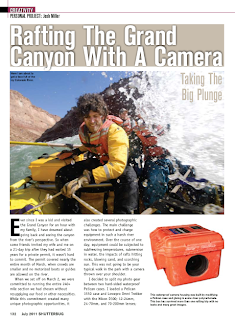 After an amazing time last summer visiting friends from our outdoor school days and hiking like crazy, we couldn't resist another visit to Glacier National Park this summer. So after being home for less than three weeks from the Alsek trip we loaded all our gear into the Civic and hit the road. After spending a night near the the amazing Sawtooth's in Idaho, we spent two and a half weeks hiking with friends, photographing, and working with several other California based photographers.
After an amazing time last summer visiting friends from our outdoor school days and hiking like crazy, we couldn't resist another visit to Glacier National Park this summer. So after being home for less than three weeks from the Alsek trip we loaded all our gear into the Civic and hit the road. After spending a night near the the amazing Sawtooth's in Idaho, we spent two and a half weeks hiking with friends, photographing, and working with several other California based photographers.
There is something to be said for spending a big chunk of time in a location to really learn the light and where to be in different situations. Having spent more than a month during the past two summers in Glacier this trip turned out to be amazingly productive for me despite the heavy snow year. Going-To-The-Sun road actually had its latest opening ever, and several trails I had hoped to shoot from were closed due to snow.
 The first couple days this bothered me because I had planned the trip around the typical flower bloom, and had several previsualized images up my sleeve. At first I really had to focus on changing my attitude and find the "gifts" that were being given me. As an artist it is SO important to look at your surroundings and follow what gives you passion. For me it took a stormy sunrise and rainbow at St. Mary Lake that had every other photographer running for cover to get me back on track.
The first couple days this bothered me because I had planned the trip around the typical flower bloom, and had several previsualized images up my sleeve. At first I really had to focus on changing my attitude and find the "gifts" that were being given me. As an artist it is SO important to look at your surroundings and follow what gives you passion. For me it took a stormy sunrise and rainbow at St. Mary Lake that had every other photographer running for cover to get me back on track. The photographers I worked with had a wonderful time and came home with great images of bears, big horned sheep, wild flowers, and of course Wild Goose Island under a crescent moon. We all left energized and dreaming of another summer adventure in the Glacier high country when the snows are gone.
The photographers I worked with had a wonderful time and came home with great images of bears, big horned sheep, wild flowers, and of course Wild Goose Island under a crescent moon. We all left energized and dreaming of another summer adventure in the Glacier high country when the snows are gone.







































